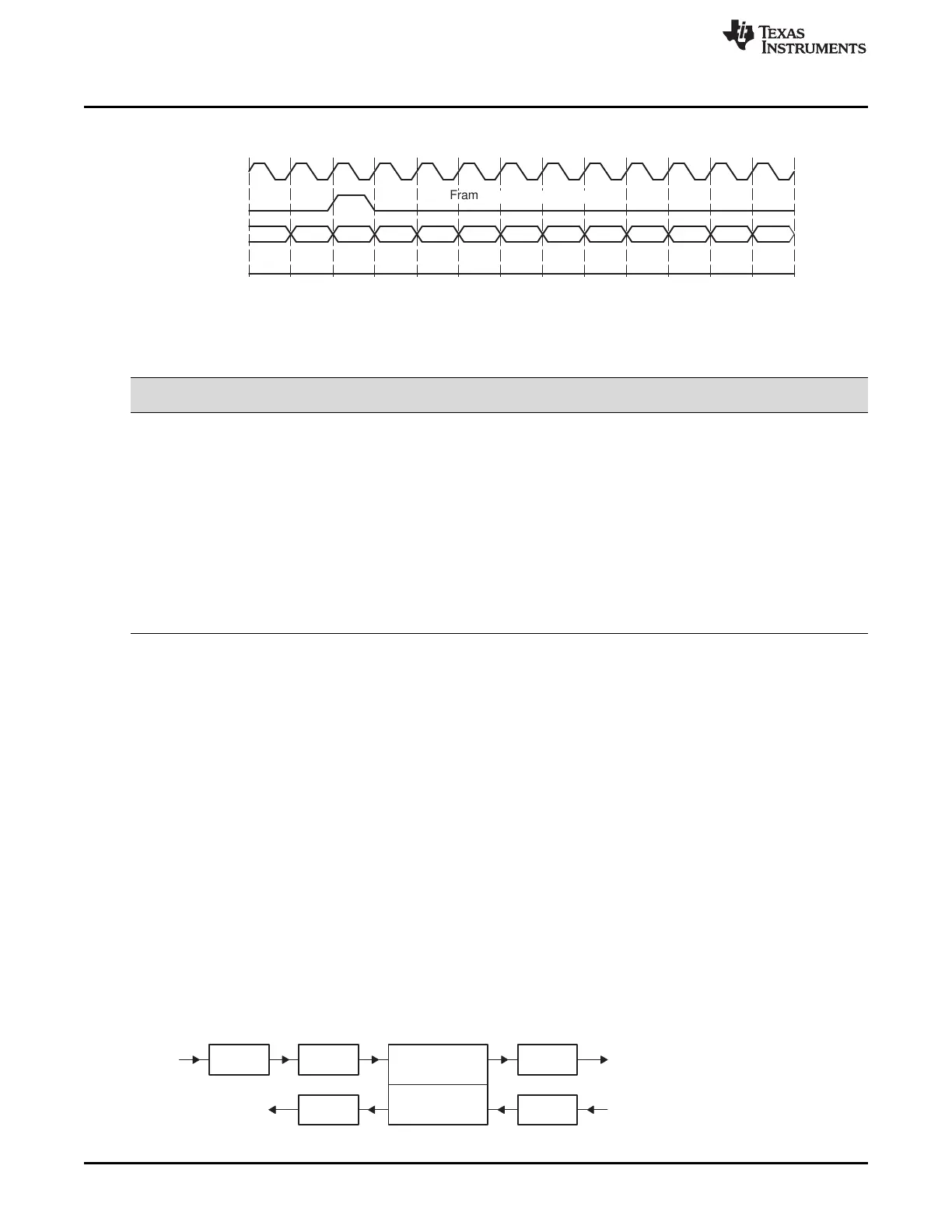From CPU or DMA controller
DXR1
To CPU or DMA controller
DRR1
16
16
DX
8
8
XSR1
Compress
Expand
DR
RBR1RSR1
(R/X)SYNCERR
D(R/X)
FS(R/X)
CLK(R/X)
C4C5C6C7B0B1B2B3B4B5B6B7A0
Frame synchronization ignored
Transmitter Configuration
www.ti.com
728
SPRUI07–March 2020
Submit Documentation Feedback
Copyright © 2020, Texas Instruments Incorporated
Multichannel Buffered Serial Port (McBSP)
Figure 12-52. Unexpected Frame-Synchronization Pulse With (R/X) FIG = 1
12.9.12 Transmit Companding Mode
Table 12-59. Register Bits Used to Set the Transmit Companding Mode
Register Bit Name Function Type
Reset
Value
XCR2 4-3 XCOMPAND Transmit companding mode R/W 00
Modes other than 00b are enabled only when the appropriate
XWDLEN is 000b, indicating 8-bit data.
XCOMPAND = 00b No companding, any size data, MSB
transmitted first
XCOMPAND = 01b No companding, 8-bit data, LSB
transmitted first (for details, see
Section 12.8.11.4, Option to Receive
LSB First)
XCOMPAND = 10b μ-law companding, 8-bit data, MSB
transmitted first
XCOMPAND = 11b A-law companding, 8-bit data, MSB
transmitted first
12.9.12.1 Companding
Companding (COMpressing and exPANDing) hardware allows compression and expansion of data in
either μ-law or A-law format. The companding standard employed in the United States and Japan is μ-law.
The European companding standard is referred to as A-law. The specifications for μ-law and A-law log
PCM are part of the CCITT G.711 recommendation.
A-law and μ-law allow 13 bits and 14 bits of dynamic range, respectively. Any values outside this range
are set to the most positive or most negative value. Thus, for companding to work best, the data
transferred to and from the McBSP via the CPU or DMA controller must be at least 16 bits wide.
The μ-law and A-law formats both encode data into 8-bit code words. Companded data is always 8 bits
wide; the appropriate word length bits (RWDLEN1, RWDLEN2, XWDLEN1, XWDLEN2) must therefore be
set to 0, indicating an 8-bit wide serial data stream. If companding is enabled and either of the frame
phases does not have an 8-bit word length, companding continues as if the word length is 8 bits.
Figure 12-53 illustrates the companding processes. When companding is chosen for the transmitter,
compression occurs during the process of copying data from DXR1 to XSR1. The transmit data is
encoded according to the specified companding law (A-law or μ-law). When companding is chosen for the
receiver, expansion occurs during the process of copying data from RBR1 to DRR1. The receive data is
decoded to twos-complement format.
Figure 12-53. Companding Processes for Reception and for Transmission

